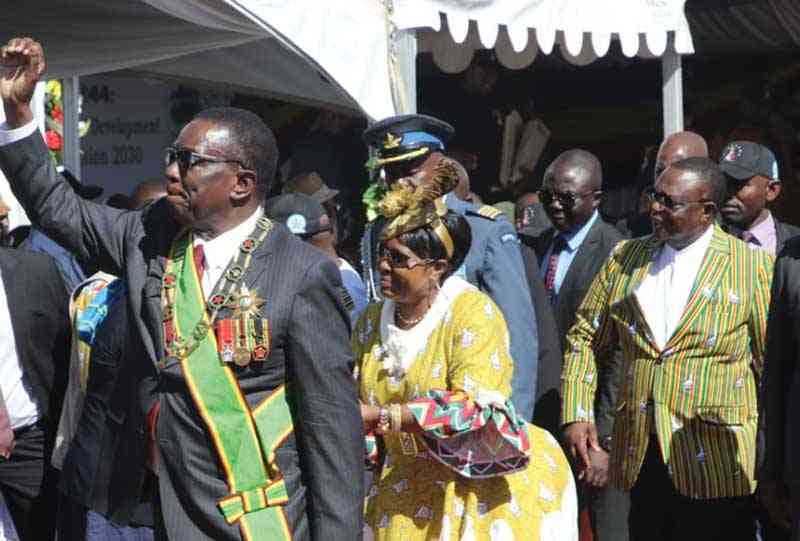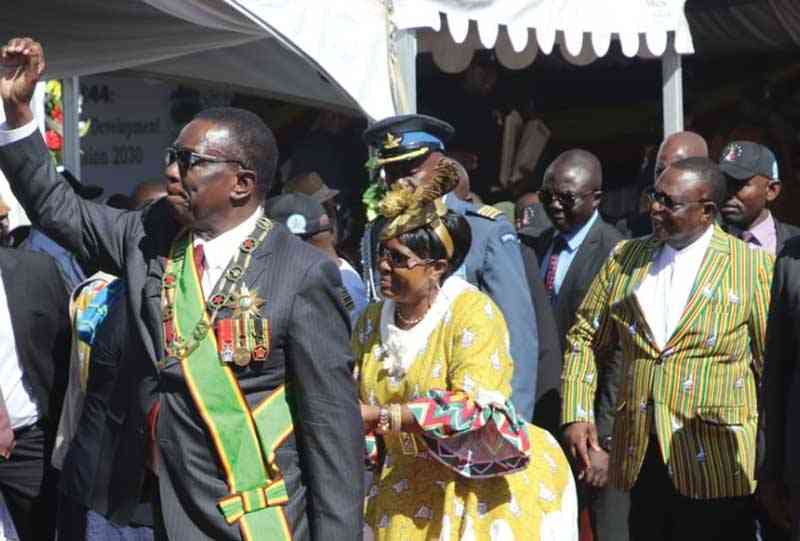
I recently watched the much-acclaimed movies 12 Years a Slave and Django Unchained. They rekindle sad, sordid and excruciating episodes black people endured under the brute force and barbarism of white men.
Opinion: Tamsanqa Mlilo

During those horrendous days, the typical life of black man was hard, painful and short.
I was emotionally drained and almost paralysed at the end of these heartrending movies.
The films capture an assortment of slavery brutalities and religious underpinnings. I am currently reading Roots by Alex Haley. His is an extraordinary account of his own 12-year-search for his family origins.
Haley meticulously traces his ancestry through six generations — slaves and freedmen — to Africa.
One of the most starkly brute features of slavery was the slave trade from Africa to the western hemisphere, a brutality for which westerners were chiefly responsible, but in which some treacherous Africans had a share.
The chief precipitant of the trade was the opening of the New World and the development by whites of a new economy based upon the production of staple crops.
- Chamisa under fire over US$120K donation
- Mavhunga puts DeMbare into Chibuku quarterfinals
- Pension funds bet on Cabora Bassa oilfields
- Councils defy govt fire tender directive
Keep Reading
The white merchants and sea captains, who transported Africans to the New World, were actuated by their desire for profit and by the insatiable demand for cheap labour on the part of plantation capitalism.
The Africans, who captured and sold slaves for the European traders, were responding to vast social and economic changes taking place elsewhere, those whom they sold away to American slavery were sometimes captives taken in the course of African wars, but as time passed on the victims were increasingly the hapless pawns seized specifically for corrupting exchange involving irresistible Western guns and goods.
In the end, at least nine million people were brought forcibly from Africa to the plantations of the western hemisphere, a total which excludes the uncounted millions more, who died on the long march to the slave baracoons of Africa, on the awful Middle Passage across Atlantic, or during the “seasoning” process in the New World.
The movement to free the slaves, which in the early 1830s was transformed from a relatively low-key campaign of evolutionary gradualism, to a militant crusade, originated in the early colonial period, and by 1820 the “impulse”, as it has been called, was clearly channelled in several directions that sought in different ways to alter profoundly the situation of Afro-Americans in the United States.
The movement has had great consequences in establishing the identity of the American community and redefining and extending the principles of democratic society.
One of the origins of the pre-1830 antislavery movement was the doctrine and polity of Protestant churches in the United States, including most notably the Quaker denomination, whose members during and after the revolution, became leaders in antislavery organisations.
Another origin was the ideology of the Declaration of Independence and the newly aroused sense of national purpose that followed 1789.
The reformers utilised pulpit, pamphlets and political pressure and they founded newspapers and voluntary organisations, with the result that their efforts and objectives complicated national political life from the convention of 1787 through such political crises as the Missouri Compromise and the Virginia debate of 1831-32.
The objectives of the various groups were not identical and did not always envision the conferring of full rights or citizenship on black Americans.
One’s aim was the voluntary emancipation of slaves by their owners. Another was the abolition of slave trade. A third was the containment of the slavery system within the area, where it prevailed already. A fourth was the project to purge the nation of blacks by deporting them to Africa.
Most emancipated slaves owned little more than the clothes on their backs when freedom came.
Unless they received some kind of massive economic assistance, it was clear that they would remain an economically subordinate class, dependent on whites for employment.
Several black leaders, radical Republicans, and abolitionists urged the confiscation of plantations owned by “rebels” and their redistribution in 40-acre plots among the freedmen.
This was the origin of the freed slaves’ hope for “40 acres and a mule”, which was no delusion of ignorant minds, but a concrete proposal for agrarian reform.
The Freedmen’s Bureau was charged with responsibility for settling emancipated slaves on abandoned or confiscated plantations, several thousand families were settled on such land, but in the end, most of the property was returned to its confederate owners; the blacks were evicted and forced to become sharecroppers or wage earners.
Congress did adopt piecemeal legislation designed to facilitate the freedmen’s acquisition of land, but those provisions were far too little and too late. There was no major programme for agrarian reform.
In the words of Malcolm X: “Our people were outright slaves, outright slaves. We pulled ploughs like horses.
We were bought and sold from one plantation to another like you sell chicken or like you sell a bag of potatoes. George Washington exchanged a black man for a keg of molasses.”
Lynching, disfranchisement, racial violence, Jim Crow and black protest movements were the most dramatic aspects of race relations. Most blacks in the post-Reconstruction generation lived and worked on the land — usually owned by white men.
Slavery was not only about cheap labour, it was a downright racist project aimed at mostly blacks.
It brought untold suffering and degrading treatment ranging from family dislocations, rape, beatings, lynching, starvation and humiliation.
It was the worst form of human rights violations and of oppression of black man by a white man.
In modern times, Africa’s contact with the outside world was at first principally through the slave trade.
The slave trade came to end in the 19th century, but at that time, Europe expanded its conquest and almost all of Africa became colonial territories.
The relationship of the black man to the white man, both in Africa and in the western hemisphere, became unmistakably that of a social inferior to a superior.
And, as usual, those who benefited from this social fact created an ideological schema to justify and, thus, to sustain it.
The schema was racism, and its tenets spread far and wide among the oppressors and the oppressed.
The arguments of racism were that Africans, black men suffered from inherent social backwardness, probably rooted in their biological make up and certainly entrenched in their cultural history.
Africans were presumed to be deficient in technological inventiveness and competence.
And these deficiencies were presumed to make it impossible for Africans to function adequately in a modern world of rational economy and bureaucratic government.
Africans, they said, had no historical achievements to their credit, no records, no monuments. They had created no high culture, no world religion, and no great empires.
The racists even occasionally pointed by contrast to India, China, Persia and other colonial or semi-colonial nations.
The latter, at least, had a glorious past, if less splendid present, but Africa had virtually nothing. The peoples of Africa were said to be the bottom of the world’s totem pole.
They had what Richard Wright called, borrowing a phrase of Nietzsche’s, a “frog perspective”.
That these arguments were sociological and psychological nonsense, based on distortion of historical fact, has been shown over and over again, particularly since 1945.
Nonetheless these ideas were the working frame reference of white men in Africa and elsewhere, for a very long time. And they are far from entirely extinct even today.
Tamsanqa Mlilo is a director at Mediation for Peace Centre, human rights activist and social commentator.











